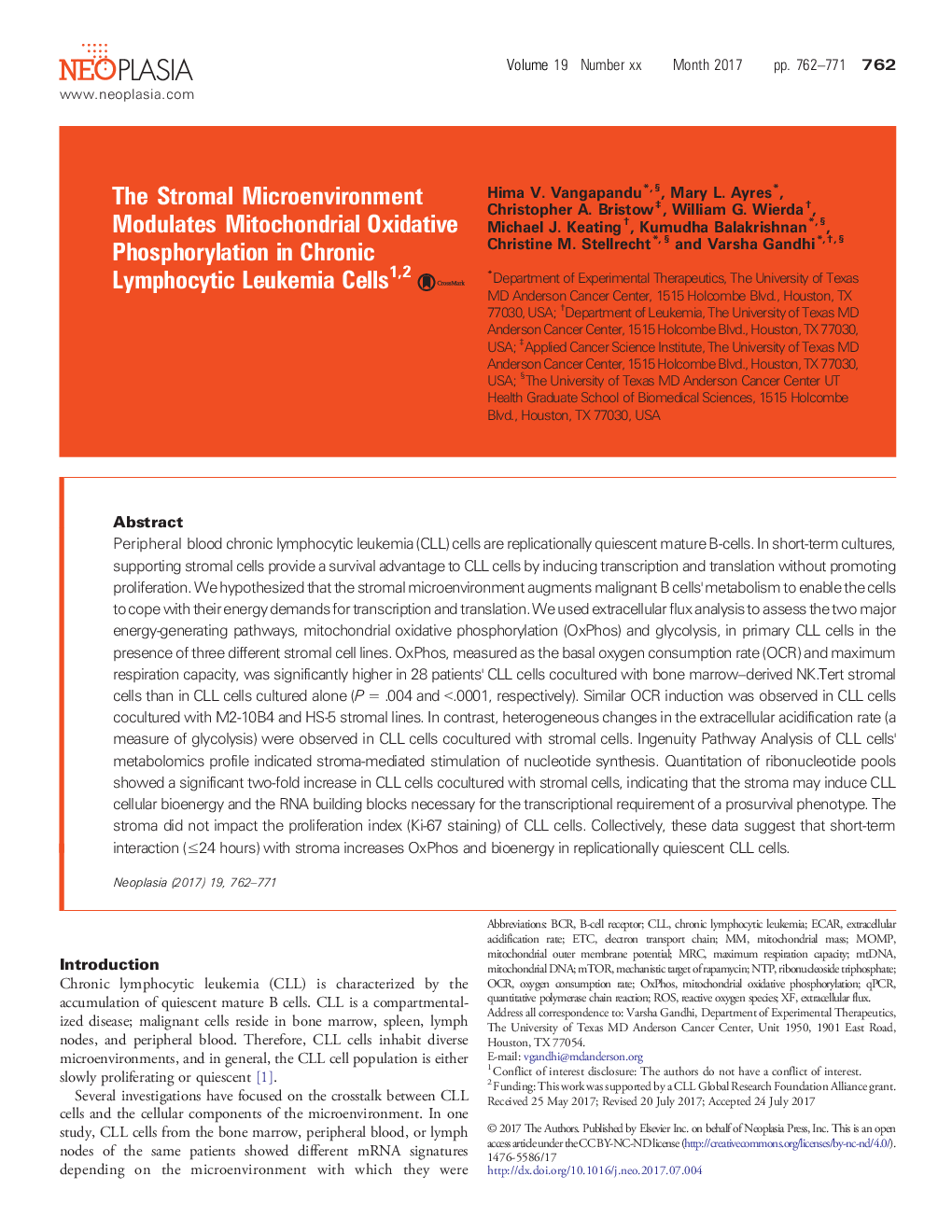| Article ID | Journal | Published Year | Pages | File Type |
|---|---|---|---|---|
| 8456889 | Neoplasia | 2017 | 10 Pages |
Abstract
Peripheral blood chronic lymphocytic leukemia (CLL) cells are replicationally quiescent mature B-cells. In short-term cultures, supporting stromal cells provide a survival advantage to CLL cells by inducing transcription and translation without promoting proliferation. We hypothesized that the stromal microenvironment augments malignant B cells' metabolism to enable the cells to cope with their energy demands for transcription and translation. We used extracellular flux analysis to assess the two major energy-generating pathways, mitochondrial oxidative phosphorylation (OxPhos) and glycolysis, in primary CLL cells in the presence of three different stromal cell lines. OxPhos, measured as the basal oxygen consumption rate (OCR) and maximum respiration capacity, was significantly higher in 28 patients' CLL cells cocultured with bone marrow-derived NK.Tert stromal cells than in CLL cells cultured alone (P = .004 and <.0001, respectively). Similar OCR induction was observed in CLL cells cocultured with M2-10B4 and HS-5 stromal lines. In contrast, heterogeneous changes in the extracellular acidification rate (a measure of glycolysis) were observed in CLL cells cocultured with stromal cells. Ingenuity Pathway Analysis of CLL cells' metabolomics profile indicated stroma-mediated stimulation of nucleotide synthesis. Quantitation of ribonucleotide pools showed a significant two-fold increase in CLL cells cocultured with stromal cells, indicating that the stroma may induce CLL cellular bioenergy and the RNA building blocks necessary for the transcriptional requirement of a prosurvival phenotype. The stroma did not impact the proliferation index (Ki-67 staining) of CLL cells. Collectively, these data suggest that short-term interaction (â¤24 hours) with stroma increases OxPhos and bioenergy in replicationally quiescent CLL cells.
Keywords
qPCRNTPBCROXPHOSmTORMRCECAROCRCLLMitochondrial DNAROSMitochondrial massmtDNAribonucleoside triphosphateelectron transport chainextracellular fluxMitochondrial oxidative phosphorylationChronic lymphocytic leukemiaMOMPOxygen consumption rateextracellular acidification rateMechanistic target of rapamycinETcquantitative polymerase chain reactionReactive oxygen speciesB-cell receptor
Related Topics
Life Sciences
Biochemistry, Genetics and Molecular Biology
Cancer Research
Authors
Hima V. Vangapandu, Mary L. Ayres, Christopher A. Bristow, William G. Wierda, Michael J. Keating, Kumudha Balakrishnan, Christine M. Stellrecht, Varsha Gandhi,
